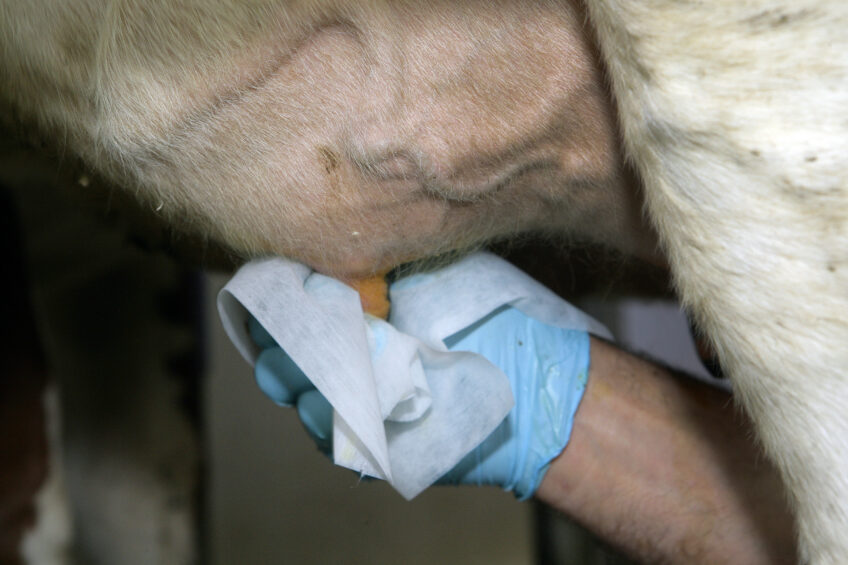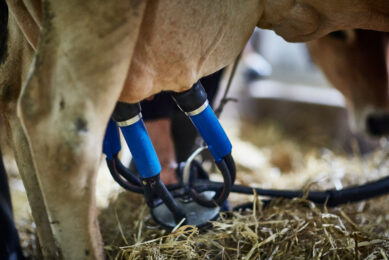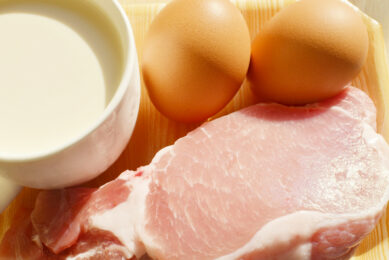Germany: Selective dry cow therapy is possible

Careful management and cleanliness prove key to the success of selective dry cow therapy programmes.
While blanket dry cow therapy has long been standard practice, dairy operations around the world are proving that under the right management conditions the practice is unnecessary. Dr Mark Holsteg, a veterinarian with the Dairy Cattle Health Service in Germany, explained how the results of a selective dry cow therapy trial at Haus Riswick, an agricultural research and training centre in Kleve, convinced sceptical producers that blanket dry cow therapy is unnecessary.

Farmers were sceptical
Five years ago, Holsteg began a trial at Haus Riswick with the goal to show dairy farmers that a reduction in antimicrobial use is possible, even at the vulnerable drying off stage. Before beginning the trials, German dairy farmers were sceptical. They were certain, said Holsteg, that udder health would decline and would lead to herd loss. Designed to prove just the opposite, the trial yielded positive results. Under the trial 112 participating cows were divided into 3 treatment groups: one group was treated with antimicrobials, one was not, and one group was S. aureus positive. Cows were selected by setting easy benchmarks for participation. Cows suitable for selection, said Holsteg, had to have a somatic cell count of less than 150,000 at dry off, and they could not have had mastitis in the previous 3 months. Furthermore, they could not be a known carrier of S. aureus. “Cows we know that have S. aureus are put into a different therapy group,” he said. In the days leading up to drying off, only cows with a negative California Mastitis Test result are eligible for participation. All quarters are tested and only those with four healthy quarters are selected. “Sometimes we find a difference in one quarter,” said Holsteg. “When there is a little difference in one quarter we do the whole cow with antibiotics.” The reason for doing this, he said, is because, once infected, it is easy for pathogens to jump from one quarter to another. Therefore, when therapy needs to be applied to one quarter, it’s applied to all 4, he said.
Cleanliness during milking
Strict management practices are crucial to the success of any selective dry cow therapy programme, and so changes were made at the farm level, Holsteg explained. Bedding was kept clean, and the milking routine sanitary.
Leading up to drying off, cleanliness during the milking routine can have a great impact on the incidence of mastitis in the herd, said Holsteg, explaining that contagious forms of mastitis spread easily via milking equipment and the hands of operators themselves.
To avoid the transfer of contagious pathogens, Holsteg implemented a strict milking routine at Haus Riswick. Operators wear gloves and carry out foremilk stripping into a strip cup. Following that, they pre-dip teats in foam to remove bacteria and stimulate oxytocin release. Using a separate dry towel, they carefully dry the individual teats. Finally, workers wash their hands thoroughly before and after coming into contact with the udders of individual cows.
Read also: Rumen efficiency: 9 animal indicators
Use of teat sealants
During the trial at Haus Riswick, researchers used teat sealants on selected cows at the beginning of the dry period. Teat sealants, said Holsteg, prevent microorganisms from getting into the udder via the teat canal. “Teat sealants are a useful tool to reduce the likelihood of quarters which are healthy at dry off becoming infected in the dry period and consequently should reduce your mastitis rate in the next lactation without having to use antibiotics,” said Holsteg.
Again, Holsteg reminds producers that clean bedding is extremely important to the success of selective dry cow therapy. “The biggest problem with not using antimicrobials is that the farmers are not clean enough to use teat sealants,” he said.
Trial yields promising results
Where selective dry cow therapy was implemented, trial results revealed that there was no significant difference between the first 2 groups regarding the occurrence of clinical mastitis, new disease rate and cure rate. What this means in a nutshell is that there was no negative impact on the udder health of cows that were not treated with antimicrobials. In the third group – that is, the group infected with S. aureus – there was no difference in cure rate regardless of whether or not antimicrobials were used. The reason for this, said Holsteg, is that these cows were all incurable. As a result of the trials, Holsteg and the team of veterinarians that conducted the trials at Haus Riswick were able to confirm that selective dry cow therapy can possibly lead to a reduction in antimicrobial use. In fact, their trial showed that a one-third reduction at dry off was possible. Holsteg did note, however, that selective dry cow therapy might not be a viable option for all herds, especially on farms where clinical mastitis is prevalent. However, on farms with lower incidence of clinical mastitis, under the right management system selective dry cow therapy is a viable option. “Selective dry cow therapy is easy to implement on farm and will reduce the use of antibiotics,” concluded Holsteg.
Join 13,000+ subscribers
Subscribe to our newsletter to stay updated about all the need-to-know content in the dairy sector, two times a week.










